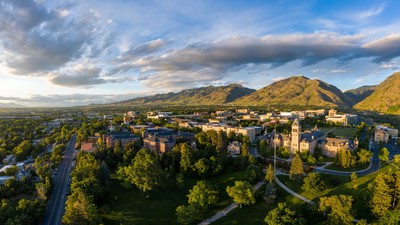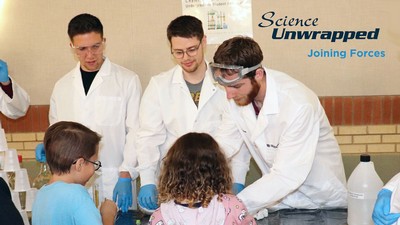Land-use and Personal Wellbeing is Topic for USU's Research Landscapes
Researcher Courtney Flint, a natural resources sociologist, will address how understanding the relationship between Utah's lands and personal well being, as well as the importance of including the goals and objectives of key stakeholders in making land-use decisions, is necessary for Utah's future at the next Research Landscapes in Salt Lake City.
Utah is a state known for its national parks and skiing thanks to its unique geography and wildly diverse, and popular, landscapes. But as the state boasts the fourth-fastest-growing economy in the United States and its population continues to experience a boom, land-use decisions in Utah’s future will become increasingly difficult and complex.
The makeup of the state has evolved over the past two decades, and so too have the many natural wonders, agricultural swaths and urban ecosystems forced to interact with one another to a greater degree.
Utah State University’s Research Landscapes event on Tuesday, Oct. 1, will address these important issues and more. Utah State University researcher Courtney Flint, a natural resources sociologist, will discuss how understanding the relationship between Utah’s lands and personal wellbeing, as well as the importance of including the goals and objectives of key stakeholders in making land-use decisions, is necessary for Utah’s future.
Hosted at the O.C. Tanner Headquarters, 1930 State Street, Salt Lake City, from 4 to 5:30 p.m., the event also features co-presenters Salt Lake County Mayor Jenny Wilson and Cameron Diehl, executive director of the Utah League of Cities and Towns.
Launched earlier this year, Research Landscapes is a series of events designed to provide critical research findings within Utah’s most important natural resources—land, water and air, to Utah civic, community and business leaders.
Flint and other USU researchers are gaining an understanding of how population growth is altering the human footprint on Utah's land, and they are taking into account the changing demographics within and across Utah communities by facilitating processes to bring representative voices to the table.
“In Utah, our most notable landscape change is the expansion of urban areas as our population grows,” Flint said. “Zooming in on the Wasatch Front and Wasatch Back we can see how rapidly the urban landscape has expanded in just 15 years.”
Proportions of Utah’s gross domestic product and jobs that come from extracting natural resources (from agriculture or from mining including oil and gas) are relatively small compared to other Intermountain states, Flint noted.
“However, agriculture and mining are critically important, and they are tied to Utah’s historic development and identity,” Flint said. “Despite our highly urban population, Utahns are generally strong supporters of agriculture. And as our water situation grows ever more tenuous, the fact that agriculture uses over 80% of water in the state will be an increasing focus of discussion.”
Fellow USU faculty Steven Daniels, a sociologist, Jordan Smith, from the Department of Environment and Society, and David Anderson and Jake Powell, both from Landscape Architecture and Environmental Planning, will have their research highlighted on various topics including fires in the Intermountain West, natural resource dependent communities, federally controlled lands and recreation and well-being.
Utah State University Research Landscapes provides an entry point for state and community decision makers across the Wasatch Front to connect with the researchers who are investigating the most critical issues facing Utah. With a focus on the state's most important shared resources — its land, water and air — each Research Landscapes event features the latest findings by USU researchers, as well as highlights of work being done by other individuals and groups across the state.
“We believe presenting unbiased, academically scrupulous research that affects the lives of every Utahn on a variety of significant fronts, in an engaging forum, will elevate the dialogue on these consequential issues,” said USU President Noelle E. Cockett.
To RSVP, or for more information about Research Landscapes, visit https://research.usu.edu/landscapes/.
CONTACT
Anna McEntire
Managing Director
Janet Quinney Lawson Institute for Land, Water, and Air
(435) 881-1323
anna.mcentire@usu.edu
TOPICS
Research 920stories Community 468stories Utah 391stories Environment 279stories Land Management 130stories Landscapes 52storiesComments and questions regarding this article may be directed to the contact person listed on this page.






